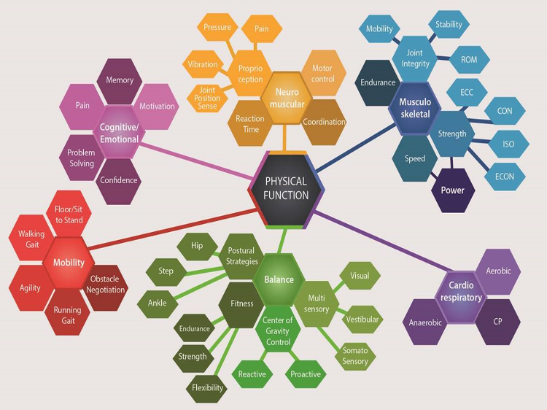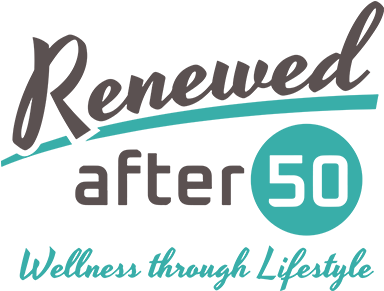Back in the 70s and 80s, aerobics became incredibly popular. Remember the step aerobics craze? Jazzercise (still going strong)? Tae Bo? For years, exercise was synonymous with the term aerobics, yet that’s really only one small domain of physical function.
Cardiorespiratory endurance is actually three distinct systems that all function together: aerobic, anaerobic, and CP (creatine phosphate) systems. Longer distance activities, like walking, swimming, and running, use the aerobic component … things that are done repetitively for a long period of time. But none of these workouts relate to strength training and for women over 50, strength training exercise is actually far more valuable.

So, let’s now talk about strength training, which is a more traditional exercise regime. We’ve all heard that we need strength training in order to stay strong as we get older. It’s known that muscle mass and strength decline more rapidly as we age (a process called sarcopenia). This typically starts to occur around the age of 40 and then progressively worsens as we get older. The good news is that by incorporating strength training into your exercise program you can stop the process.
You can regain your muscle strength and rebuild muscle mass.
Strength training benefits go beyond mere visible results and improved muscle mass to include chronic disease prevention, such as a decreased risk of heart disease, osteoporosis, arthritis, and type 2 diabetes. In fact, strength training is considered so important that the American College of Sports Medicine (ACSM) has added fitness guidelines specific to weight training for people over 50.
But, as we age, traditional weight training where you work isolated muscle groups (think of exercises where you focus on only one muscle, like bicep curls) become less efficient. We already know that there are six domains that we need to work. By incorporating more domains into a weight workout, you start to build more than just muscles, but let’s expand on that.

The reality is the musculoskeletal system is comprised not only of muscle strength, but also muscle endurance, speed, and power (which is a combination of strength and speed). To train all of these areas is much more complex than hopping on a weight machine at the gym—which was designed to isolate certain muscles and work them one at a time. The advantage of using machines is that they are simple and “easy” to use. The disadvantage is that they are not very functionally oriented. They definitely help you get stronger, but they don’t really help you improve your ability to move. Strength machines have a place, and they have a purpose but there is a much better way to get stronger.
When you join a Renewed after 50 training group, your personal training workouts will incorporate strength training in every dimension. We’re going to do strength exercises on your feet … on the floor … seated … kneeling … and in just about every way possible. Research literature refers to this type of workout as functional task training (or just functional training).
Why do it this way? Because our bodies are meant to move in three-dimensions. We squat, bend over, push, pull, carry, and more during our daily activities, so that is exactly how we need to train when we work out. Instead of using machines, your body becomes the machine that lifts, rotates, and works. Using these complex movements allows us to train you like your body was meant to move. Forwards, backwards, sideways, up, down, turning, on one leg, on two legs … all the ways you move in real life.
We are also going to strength train at different speeds because we want you to be able to move adeptly at different rates. Power is the combination of strength and speed. It is really what allows you to move well and move in a forceful way. Think about climbing stairs. It takes not only strength, but also speed to efficiently move upwards. Think how hard it would be to climb stairs as slowly as possible. Power is critical when it comes to climbing stairs or getting out of a chair or even carrying things.
It is an essential element of most sports and vigorous activities, like skiing and hiking. When we’re doing strength training, personal trainers think about all the different movements that you need to do, want to do, and love to do. For instance, if you like to ski, then we might have one workout with lunges and squats to strengthen your muscles while helping you gain more of the power and control that’s essential when skiing downhill, or for that matter, hiking uphill!

The narrow view of exercise from the 80s or 90s relied on training programs that were one dimensional. There might have been a lot of aerobic work—running, elliptical, or aerobics classes—or a lot of strength training of isolated muscle groups on machines or with free weights. What was missing was a connection between the aerobic conditioning, the weightlifting, and your real life. You need more than the one-dimensional equipment found in most health clubs that only allows you to move in isolation. You can’t twist, you can’t rotate, you can’t turn, you can’t change directions.
At Renewed after 50, our personal training is specifically
designed for women over 50. It will take your strength and stamina training to the next level. Every training plan focuses on your needs within the six domains. You get stronger by combining strength exercises with movement. You gain more endurance by working all three dimensions of the cardiorespiratory system.
Ultimately, you become a stronger, fitter you able to live a life doing what you want—no restrictions! As a woman over 50, you’ll become a centre of attention and admiration from your friends, family and all those who see you as vibrant, active and a woman of beaming good health.
